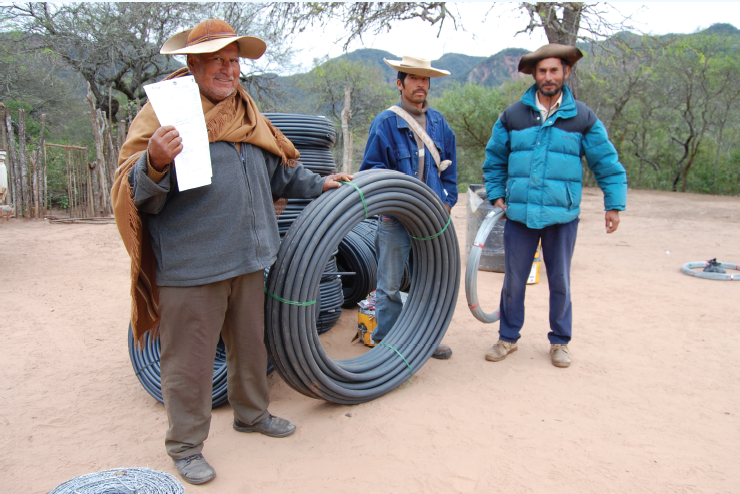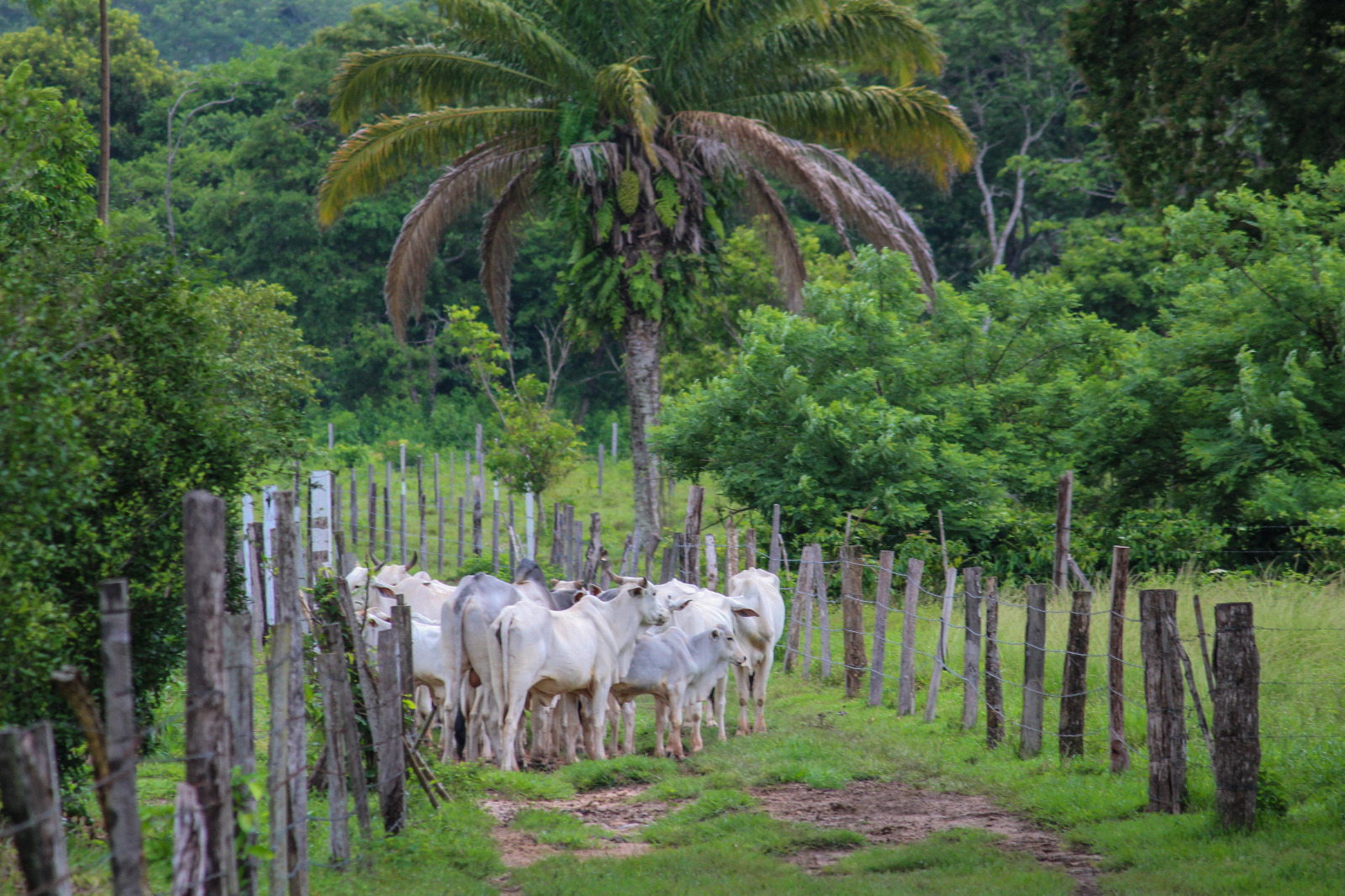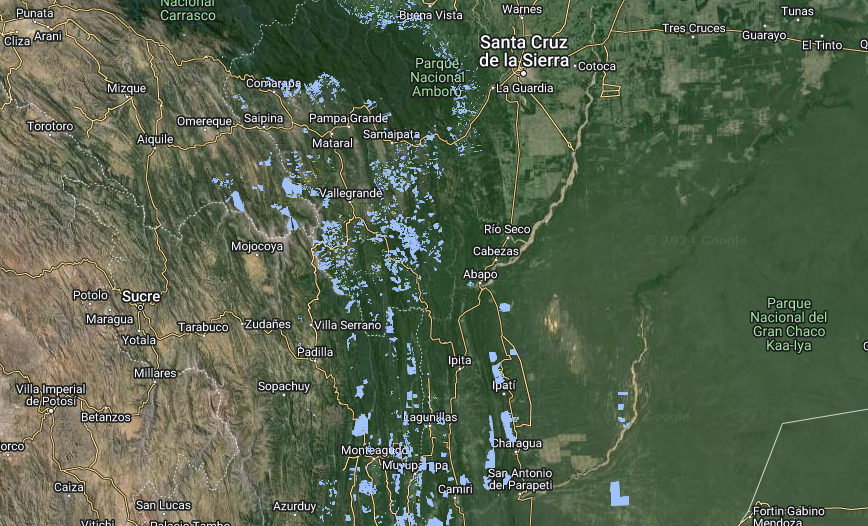Policy brief: tackling policy dilemmas for wetland restoration
08 December, 2025
Wednesday 29 may 2024
Header photo: Upstream communities receive conservation incentives. Photo courtesy of Fundación Natura Bolivia
In Santa Cruz, Bolivia, in the community Los Negros, we explore how EbA and LLA principles are applied in practice, locally as watershed agreements or “Acuerdos reciprocos por el agua”. This case not only highlights the challenges faced but also showcases the potential for EbA and LLA to foster resilience, offering insights into stakeholder engagement, policy integration, and the vital role of monitoring and evaluation in adapting to an ever-changing climate. As Bolivia stands at the crossroads of climate change mitigation and sustainable development, the insights from this experience are important.
Ecosystem-based adaptation (EbA) is centered on the use of biodiversity and ecosystem services to help communities adapt to the adverse effects of climate change. It involves the sustainable management, conservation, and restoration of ecosystems to provide services that help people cope with climatic changes.
Locally-led adaptation (LLA) prioritises the leadership and decision-making authority of local communities and stakeholders in the adaptation process. It recognises that local people are the most knowledgeable about their own needs and the challenges they face due to climate change.
In practice, EbA and LLA can be complementary. Effective adaptation strategies can integrate EbA principles within a locally-led framework, ensuring that ecosystem management efforts are aligned with local needs, knowledge, and leadership, thereby maximising resilience and sustainability.
The watershed agreements in Bolivia reflect the innovative, community-driven solutions to climate change. As more and more communities in Bolivia, especially in the Chiquitania region, face water scarcity issues, it is key to implement models which are beneficial for nature and also local communities.
Originating from a simple, yet revolutionary exchange in the village of Los Negros in 2003, this model has since transformed the landscape of environmental conservation in Bolivia and beyond. By bridging the gap between upstream land conservation and downstream water usage, watershed agreements have turned the traditional Payment for Environmental Services (PES) schemes on their head, offering a more adaptable, effective, and locally resonant approach to safeguarding nature’s bounty.

The essence of watershed agreements is rooted in their simplicity and reciprocal nature: upstream landowners are incentivised to conserve forests—not through complex economic transactions, but through tangible, mutually beneficial exchanges with downstream users. This pivot from economic incentives to fostering a culture of stewardship and reciprocal benefits has not only led to the conservation of over 210,000 hectares of critical watershed areas but has also cultivated a model of environmental governance that is deeply democratic, participatory, and reflective of local values and realities.
The model was initiated with a simple exchange where downstream irrigators offered beehives and honey production training to upstream landowners for every 10 hectares of forest they conserved for a year. This concept of reciprocal benefits underpins the entire watershed approach.
What started with six farmers conserving 465 hectares has grown to 4,500 families conserving 210,000 hectares by 2016. The model has been adapted by 40 Bolivian municipalities, changing the behavior of almost 200,000 people.
The agreements are funded through a combination of local government investments, contributions from water users, and initial support from non-governmental organisations (NGOs). This funding model has facilitated rapid replication and scaling of the watershed agreements.
Watershed agreements are characterised by their flexibility, allowing them to be designed, managed, and monitored locally. This local focus ensures that the agreements are relevant and adaptable to the specific needs and conditions of each community.
By focusing on cooperative, community-based processes, watershed agreements have been effective in reducing local conflicts over water and forest resources. The model promotes a message of shared responsibility and mutual benefit, which has been key to its success.



The watershed agreements in Bolivia are a vibrant example of how locally-led adaptation strategies can be a catalyst for change as well as sustainable development. The evolution from a single innovative watershed agreement in Los Negros to a widespread movement involving thousands of families and covering critical watershed areas showcases the potential for community-driven initiatives to achieve significant environmental and social outcomes.
Furthermore, the success of watershed agreements highlights the importance of local knowledge and participation in crafting effective adaptation strategies. It demonstrates that when communities are engaged as active stakeholders and decision-makers, conservation efforts are more likely to be sustainable and resilient on the long term. This approach resonates with the growing recognition of the value of locally-led adaptation, which prioritises the insights and needs of local communities in the face of global environmental challenges.
In conclusion, the watershed agreements in Los Negros, Bolivia offer a compelling case study in the power of integrating locally-led adaptation strategies with ecosystem-based adaptation principles. As we move forward in our global efforts to combat climate change, the lessons learned from Bolivia’s experience underscore the need for innovative, community-centered approaches that harness the synergies between human and ecological well-being.
The results of this case study came about thanks to IUCN NL’s earlier Shared Resources Joint Solutions project. Natura Bolivia’s work is being continued in the Strengthen the Roots project. With this project, IUCN NL and Wilde Ganzen support small community organisations in Bolivia, Ghana and Indonesia that stand up for nature in and around their communities, enabling them to mobilise local support for their work. This way, Strengthen the Roots works on nature conservation that is not performed top-down, but is driven by the collective strength of community organisations.